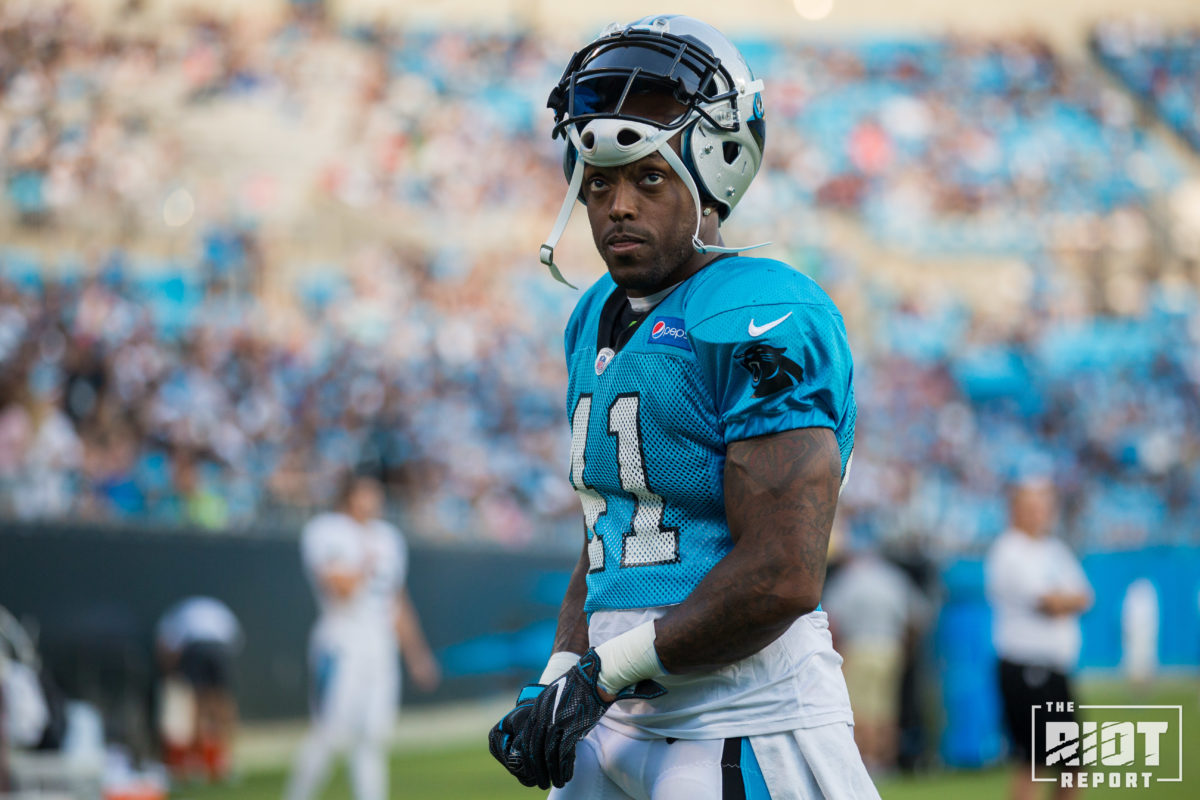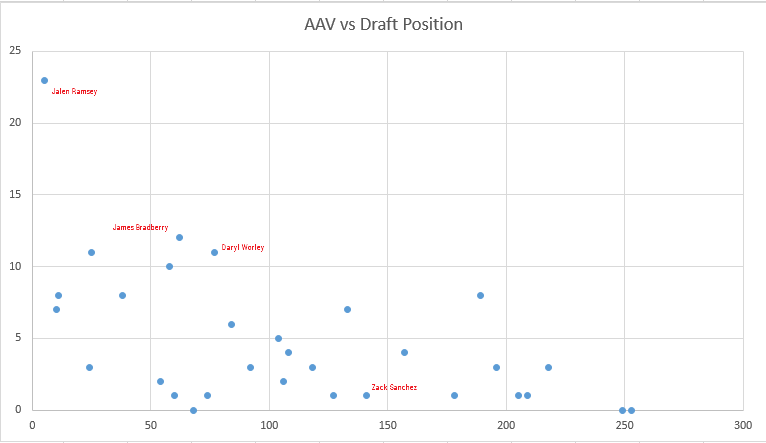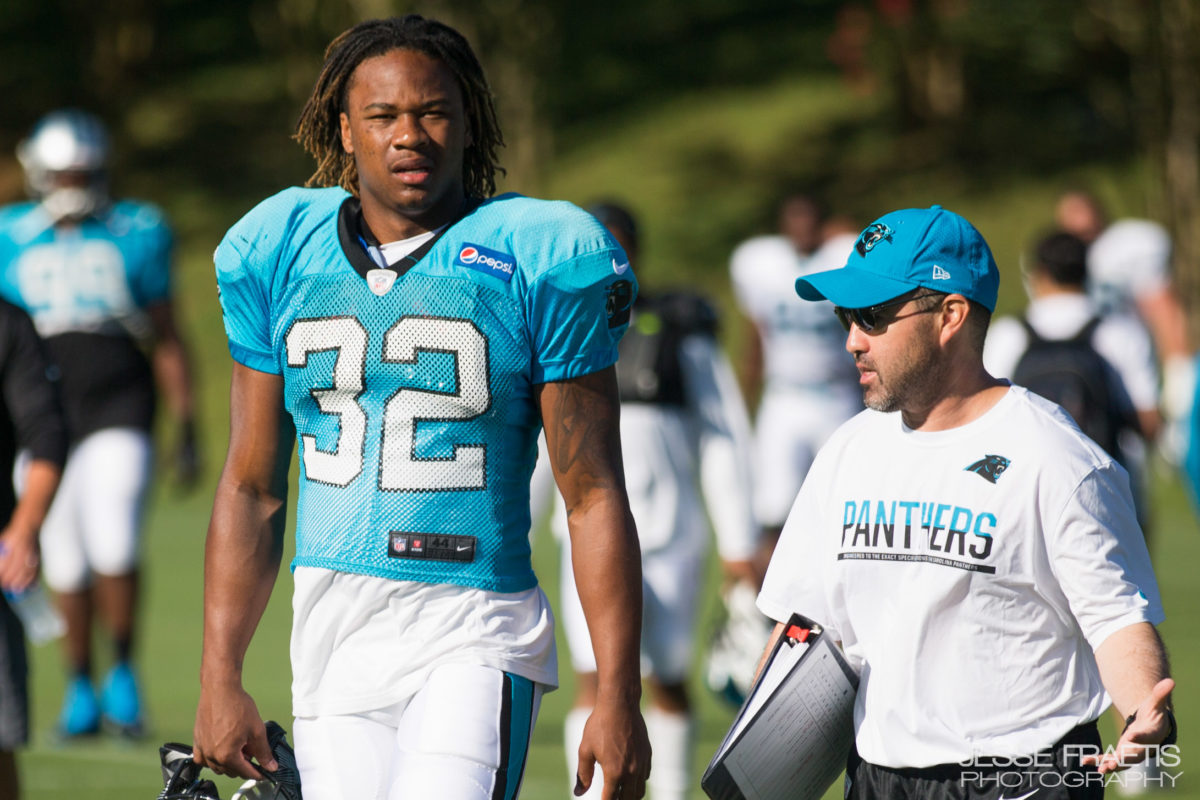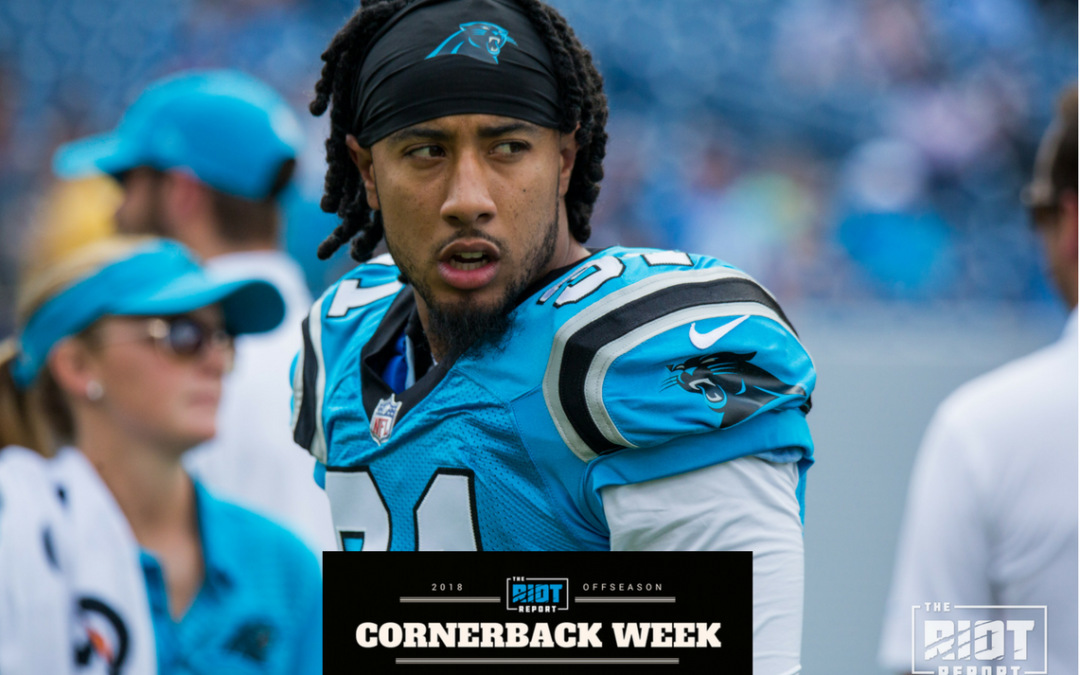Each week this offseason, we’ll be focusing on one position and how the Panthers may choose to address their needs; whether they’re in the market for an upgrade at starter or just a reliable backup, every player on the 53-man roster is going to be important in 2018.
This is Cornerback Week.
When analyzing any NFL prospect, there is a significant amount of uncertainty; if it was possible to know for certain how a player would turn out, then it would be something of a facile exercise. However, what is also true is that when it comes to projecting prospects to the next level, some players and positions are more uncertain than others.
Generally speaking, the more aspects of the pro game that a prospect is asked to demonstrate as part of his college game, the less uncertain his projection becomes. It might not be possible to project exactly how effective out of the backfield a particular running back is going to be, but it is a lot easier for a running back who was thrown the ball regularly in college as opposed to one who was never used as a receiver to be projected correctly. This is why teams look to interview quarterback prospects quite so much; the vast majority of them have never been asked to make reads or audibles in the way they will have to in the NFL.
Because of this, quarterback is one of the more uncertain position groupings, while the game of most defensive ends and running backs change very little between college and the NFL; they can be projected with a greater degree of certainty.
However. No position is quite as uncertain, quite as different at the NFL level, quite as hard to project as cornerback.

This really shouldn’t come as a surprise based on the previous statements and the state of many collegiate defenses. Take Alabama under Nick Saban; while they do occasionally play some zone coverage, historically they play an awful lot of man-press coverage on the outside. What this means is that when a team drafts a cornerback out of Alabama, they do so with very little idea of how they play in zone coverage. On the other side, many college defenses play off-zone the vast majority of the time, so any corner being drafted out of one of these teams will be completely inexperienced in man coverage and press.
In order to get around this, teams often look to work corners out extensively to try and grasp both how athletic they are and how teachable they are. The issue with both of these strategies is that it is almost impossible to accurately tie down a players’ athleticism or teachability; both are somewhat fuzzy concepts that are hard to quantify. Additionally, as teams are limited by the number of workouts they are allowed and the fact that there are other positions they need to look at, there is no way they can reach even this level of accuracy with every cornerback available; yes, they can see how a player “flips his hips”, but that doesn’t always translate to being a good corner.
All this results in a high level of unpredictability when it comes to drafting cornerbacks. The following graph shows this for 2016, with the y-axis showing approximate value (via PFR) and the x-axis shows draft position. While the first corner taken (Jalen Ramsey) has been the most valuable and there is something of a downwards trend as the draft goes on, there is a considerable degree of noise on this graph.

The Panthers drafted three corners in this class, and while Zack Sanchez has done almost nothing thus far in his career, both Bradberry and Worley have performed very well based on where they were taken. While this is very good for Panthers’ fans, it is more likely that the Panthers have simply been lucky in this case, rather than having found some special key to drafting quality cornerbacks.
With all this in mind, the question that arises is what can and should teams do about this. Fundamentally, teams are stuck with the prospects as they stand in terms of their development, so any changes in strategy should be focused more on how to maximize success based on that fact. Looking at historic data, two clear (and slightly terrifying) patterns emerge: the very best cornerback prospects have a reasonably high chance of success and there is very little correlation after that.

CB Cole Luke
The first one is certainly not a hard rule, the top cornerback taken is not guaranteed to work out, but barring a couple of notable exceptions (Dee Milliner and Justin Gilbert) they actually fare quite well. Marshon Lattimore, Ramsey, Patrick Peterson, Joe Haden, Janoris Jenkins, Darrelle Revis and Charles Woodson were all the first corner taken in their class. In terms of advice to general managers, this is possibly best phrased as ‘taking elite cornerback prospects early makes sense, but there is a large gap between elite and very good in terms of outcome’.
The second rule is certainly far more applicable for the Panthers this season, as the minimal benefit gained from drafting a cornerback in the early-to-middle rounds over drafting one late or grabbing a UDFA would mean that rather than wasting middle round draft picks, a team would be best advised to take multiple and repeated chances on UDFA corners. While some players can be clearly eliminated due to athletic limitations, signing a handful of undrafted corners every year (or possibly drafting one very late) allows a team a shot of finding a usable corner without having to risk otherwise valuable draft picks. This is a tactic that Hurney has discussed with regards to quarterbacks in the past, and it would be neither a surprise nor a bad idea to see him use a similar tactic with cornerbacks as well.



